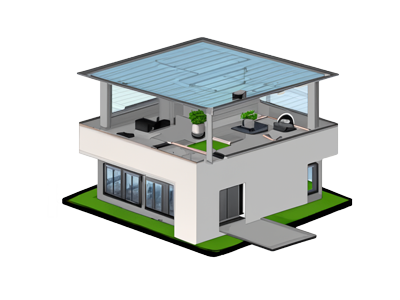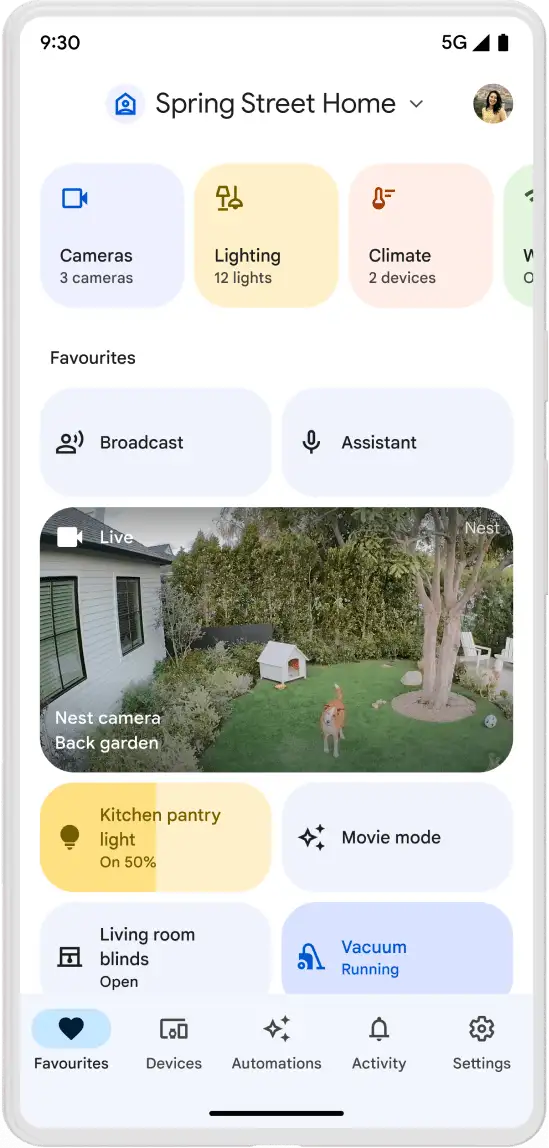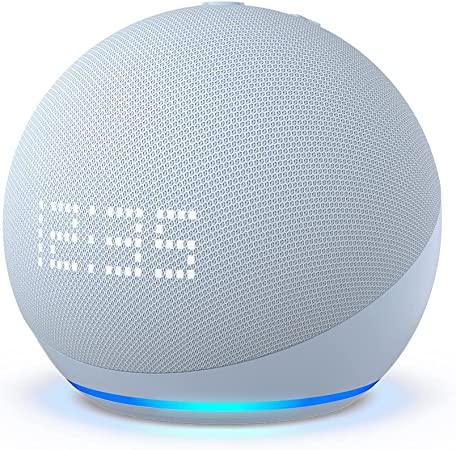Controlling Smart Glass with Smart Technology
Smart glass, also known as smart windows or privacy glass, is an innovative technology that allows the transparency of glass to be altered on demand. By applying an electric current, smart glass can transition from opaque to transparent, providing privacy, shading, or light control. In recent years, the integration of smart technology has revolutionized the way we control smart glass, offering convenient and customisable options.
This article explores the advancements in smart technology and their significant role in controlling smart glass. We delve into the various types of smart technology systems available for managing smart glass and examine the benefits and future developments in this rapidly evolving field.

The Role of Smart Technology with Smart Glass
Smart technology has played a transformative role in enhancing the functionality and usability of smart glass. Traditional methods of controlling switchable glass, such as manual switches or remotes, have been augmented and even replaced by innovative smart solutions. By incorporating intelligent systems, smart glass can now be conveniently controlled through a range of automated processes.
One of the primary advantages of smart technology in smart glass is the ability to achieve seamless integration with other smart devices and home automation systems. This integration enables users to control their smart glass using voice commands, smartphone applications, or even preset schedules, creating a truly interconnected and intelligent living environment.
Moreover, smart technology enhances the responsiveness and versatility of smart glass. With the help of sensors and automation, the glass can adapt to external factors such as light intensity, temperature, or user preferences, adjusting its transparency level accordingly. This dynamic response ensures optimal comfort, energy efficiency, and privacy management.
In addition, smart technology opens up possibilities for remote control. Users can control their smart glass from anywhere, allowing them to prepare their living spaces before arrival, ensuring privacy, or adjusting the lighting conditions even when away from home or office.
Types of Smart Technology for Smart Glass Control
Several types of smart technology systems are available for controlling smart glass.
Wireless Control Systems: These systems use wireless communication protocols, such as Wi-Fi or Bluetooth, to establish a connection between the smart glass and a controlling device. Users can operate the glass through smartphone apps, remote controls, or other wireless-enabled devices, offering flexibility and convenience.
Voice-Activated Control: With the advancements in natural language processing and voice recognition technologies, smart glass can be integrated with voice assistants like Amazon Alexa or Google Assistant. Users can control the glass simply by issuing voice commands, making it a hands-free and intuitive control option.
Smartphone Applications: Dedicated smartphone applications provide an intuitive interface for controlling smart glass. These apps often offer additional features, such as scheduling, group control, and customisation options, allowing users to easily manage the glass's transparency according to their preferences.
Integration with Smart Home Systems: Smart glass can be seamlessly integrated into existing smart home systems, enabling centralised control and automation. Integration with platforms like Apple HomeKit or Samsung SmartThings allows users to create complex automation scenarios and synchronise smart glass with other smart devices in their homes.
These types of smart technology systems demonstrate the diverse options available for controlling smart glass. Each system offers unique benefits and features, providing users with flexibility and personalisation in managing their smart glass.
Smartphone Applications for Smart Glass
Smartphone applications have become increasingly popular and convenient tools for controlling smart glass. With the rise of smart technology, dedicated apps have been developed to offer intuitive interfaces and seamless control over the transparency of smart glass. These applications empower users to manage their smart glass with ease, providing a range of features and customisation options.
One of the key advantages of smartphone applications is their user-friendly interface, designed to simplify the control process. These apps typically offer intuitive controls, such as sliders or buttons, allowing users to adjust the transparency level of the glass to their desired preference. The real-time feedback provided by the app ensures a smooth and responsive user experience.
Moreover, smartphone applications for smart glass often include additional functionalities to enhance user convenience and customisation. Features such as scheduling allow users to program specific transparency settings based on time or specific events, enabling automated control without manual intervention. Group control options enable the management of multiple smart glass panels simultaneously, providing seamless control over an entire space.
Integration with other smart devices is another notable advantage of smartphone applications. These apps can often be synchronised with other smart home systems and devices, allowing users to create customised scenes or automation scenarios. For example, users can synchronise the smart glass with their lighting systems, so that when they activate the glass to become opaque, the lights automatically adjust to a dimmer setting. Or an office partition can be scheduled to become transparent when the work-day begins. This integration creates a truly interconnected and intelligent environment.
Furthermore, smartphone applications enable remote control of smart glass. Users can conveniently manage the glass's transparency even when they are not physically present at the location. This feature proves particularly useful for scenarios such as ensuring privacy, adjusting lighting conditions, or preparing living spaces before arrival.

Integration with Smart Home Systems
Smart glass can be seamlessly integrated into existing smart home systems, creating a cohesive and interconnected living environment. By integrating with smart home platforms and systems, smart glass can be controlled alongside other smart devices, providing a unified and centralised control experience.
Integration with smart home systems offers several benefits for controlling smart glass. Firstly, it allows users to manage multiple aspects of their smart home through a single interface. Instead of using separate controls or applications for each device, users can access and control smart glass alongside other smart devices like lighting, thermostats, or security systems.
Furthermore, integration with smart home systems enables the creation of complex automation scenarios. Users can define rules and triggers that synchronise the behaviour of smart glass with other devices. For example, when a motion sensor detects movement near the glass, it can automatically activate the glass to become opaque, ensuring privacy and security.
Integration also facilitates voice control capabilities through smart home assistants. By connecting smart glass to voice-activated devices such as Amazon Alexa, Google Assistant, or Apple Siri, users can control the glass using voice commands. This hands-free and convenient method of control adds an additional layer of accessibility and ease of use.
Moreover, integration with smart home systems often allows for remote control capabilities. Users can access and manage smart glass from anywhere, using their smartphones or other connected devices. This remote control feature proves beneficial for scenarios like adjusting the glass's transparency while away from home or preparing the living space before returning.
Future Developments and Trends
The field of smart glass continues to evolve rapidly, and future developments hold the promise of even more advanced capabilities and exciting trends. Here are some potential areas of growth and innovation to look out for:
Improved Energy Efficiency: Future advancements in smart glass technology aim to enhance energy efficiency by incorporating smart sensors and algorithms. These innovations will enable the glass to automatically adjust its transparency based on factors such as solar heat gain, reducing reliance on heating, ventilation, and air conditioning (HVAC) systems.
Enhanced User Experience: Researchers and developers are working on refining user interfaces and control methods for smart glass. Gesture-based controls, augmented reality (AR) interfaces, or even brain-computer interfaces (BCIs) may emerge as novel ways to interact with the glass, providing a more immersive and intuitive user experience.
Smart Glass Integration in Public Spaces: Smart glass is finding increasing applications in public spaces such as airports, shopping malls, and office buildings. In the future, we can expect to see further integration of smart glass in architecture, including interactive displays, privacy partitions, and dynamic facades, transforming the way we experience public environments.
Advancements in Glass Technology: Ongoing research is focused on improving the performance and properties of smart glass. This includes developments in glass manufacturing techniques, durability, optical clarity, and colour options. These advancements will contribute to wider adoption and integration of smart glass in various industries.
Internet of Things (IoT) Integration: With the growing prominence of the Internet of Things (IoT), smart glass is expected to integrate more seamlessly with other IoT-enabled devices and systems. This integration will enable the glass to communicate and synchronise with a broader range of smart devices, creating a truly interconnected ecosystem.
Privacy and Security Features: Innovations in smart glass will likely focus on enhancing privacy and security features. This may include advancements in privacy modes, anti-glare coatings, or even integrated privacy filters to protect sensitive information from prying eyes.
As technology continues to advance, these developments and trends will shape the future of smart glass, providing users with even more sophisticated control options, improved energy efficiency, and a seamless integration into our living and working environments.

